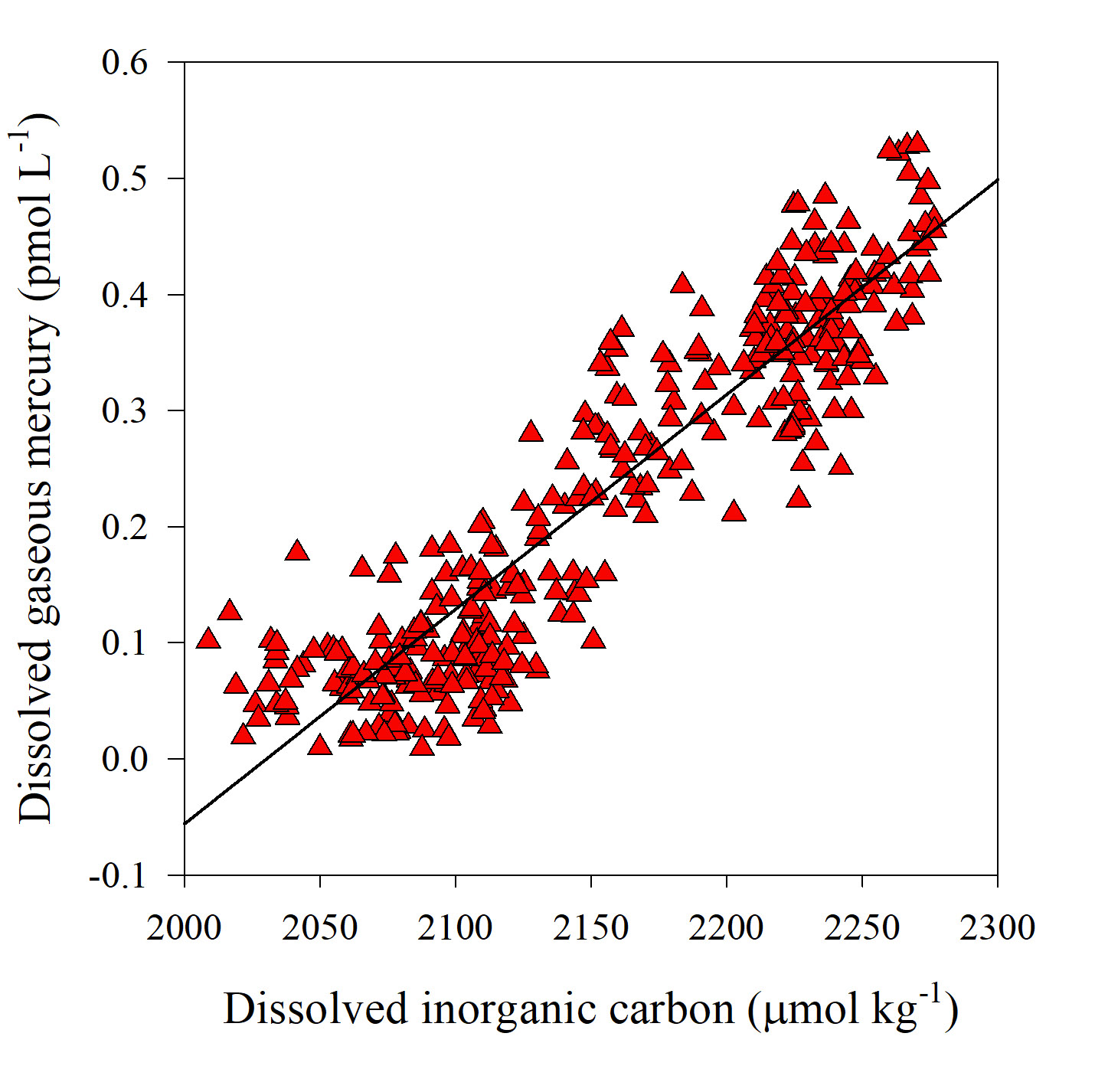Linear correlation between Dissolved Gaseous Mercury and Dissolved Inorganic Carbon opens new modelling perspectives
Živković and his colleagues (2022, see reference below) led a close study of the mercury speciation on 354 samples (24 profiles from surface to bottom) along the 40°S GEOTRACES section (GA10). For the first time, they demonstrate that dissolved gaseous mercury (DGM) concentrations are related to the water depth, the concentrations of macronutrients but moreover to the Dissolved Inorganic Carbon (DIC) concentration as seen by the linear correlations between DGM and DIC (and DGM and DIC of biogeochemical origin). Their interpretation is that DGM is photochemically produced in surface layers, and related to the remineralization of the labile organic matter down to 1000 m and the refractory one in the deep layers. They propose that DIC might be a proxy for DGM in biogeochemical models, as demonstrated by a good agreement between measured and calculated DGM values in different world oceans.


Figure: Dissolved gaseous mercury (DGM) in seawater shows linear correlation with dissolved inorganic carbon (DIC; red triangles) and biologically mediated change in dissolved inorganic carbon (DICbio, green squares). This indicates a possibility that oxidized mercury fraction (HgII) is converted to its elemental form (Hg0) during the remineralization of organic matter (breakdown into its simplest inorganic form). Data are from twenty stations in the South Atlantic Ocean, collected along a 40°S transect from surface to 5240 m depth.
Reference
Živković, I., Humphreys, M. P., Achterberg, E. P., Dumousseaud, C., Woodward, E. M. S., Bojanić, N., Šolić, M., Bratkič, A., Kotnik, J., Vahčič, M., Obu Vazner, K., Begu, E., Fajon, V., Shlyapnikov, Y., & Horvat, M. (2022). Enhanced mercury reduction in the South Atlantic Ocean during carbon remineralization. Marine Pollution Bulletin, 178, 113644. doi: 10.1016/j.marpolbul.2022.113644
